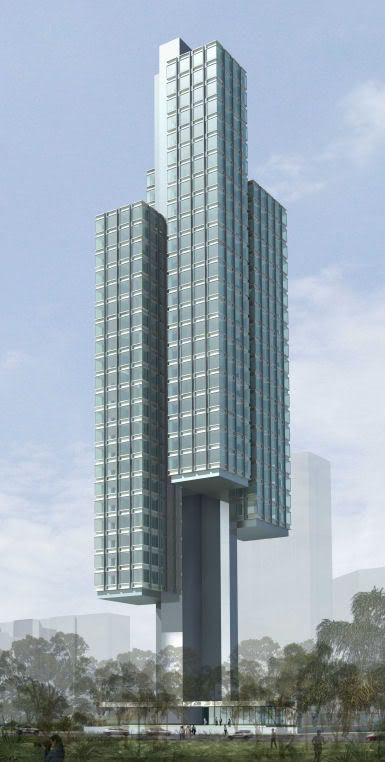http://network.nationalpost.com/np/...crawl-the-betrayal-of-yonge-and-eglinton.aspx
Urban scrawl: The betrayal of Yonge and Eglinton
By Councillor Michael Walker
Commentary
You have to feel for the residents of the Yonge-Eglinton neighbourhood in midtown Toronto.
In 2002, a late night scheme cooked up in private by a number of Toronto city councillors, including David Miller, paved the way for the surprise approval of the 54- and 37-storey twin towers of the Minto Midtown development at 2195 Yonge St.
Easily the most controversial and vilified project in the history of North Toronto, the political shenanigans associated with it resulted in one councillor being turfed out of office. More importantly, it ushered in a profound local skepticism as to the fairness and propriety of the city’s last-minute planning processes.
In the same year, the new City of Toronto Official Plan was approved. It called for the creation of plans for new growth at the Yonge-Eglinton intersection, and a local working group, including some justifiably wary citizens, began work with the city on new land use regulations and design guidelines to manage future development in their neighbourhood.
One of the plums at stake in this exercise is the large parcel at the southwest corner of the Yonge-Eglinton intersection known as the TTC Bus Terminal lands. City-owned land that has been underutilized for years, and one of the most desirable pieces of redevelopment property in the country, it sits across the street from the Minto monsters, shouldering in their shadow the burden of suspicion and mistrust brought about by previous political hi-jinks.
Over many years, the working group did its job, agreeing to a 40-storey height limit for the land, and development design guidelines to protect the adjacent residential neighbourhoods. Included was the use of a “strata plan†– essentially a horizontal division of land and air rights that enables the city to sell or lease lands to a developer up to a certain height limit, and retain ownership of the air rights above. This tool, which has been used previously by the city, was the thumb in the development dyke that local residents were looking for, and it was agreed to by the working group and the local neighbourhood.
On Oct. 8 last year, Mayor Miller got involved in the neighbourhood again. In announcing the creation of Build Toronto, a city firm mandated to dispose of city-owned assets at their highest value, he cited the TTC Bus Terminal lands as a place where this firm might do its dealing. On Feb. 4, Mayor Miller’s hand-picked Planning and Growth Management Committee all but killed the working group’s pivotal strata plan idea, opening the door once again to uncertainty in future development, and slamming the door shut on citizen respect for the planning process.
As we have come to understand in recent years, the willingness of residents to become active partners with their local government and respected participants in the making of their communities is a very fragile thing. We say that we seek out citizen input because it creates strong communities that are engaged in their own collective well being; it results in better and more responsive decisions that have staying power; and it is democratically the right thing to do.
Today, at Yonge and Eglinton, those fine sentiments ring hollow. Toronto used to be a place where citizen input was genuinely encouraged and attention was paid to the things that mattered to local people. No more. All power is a trust, and this one has been harshly undermined.
As a consequence of last minute, top-down interference by the Mayor and some of his fellow travelers, it would surprise no one if residents threw up their hands in exasperation and walked away from civic engagement altogether, which may have been the back room intent in the first place.
• Michael Walker is Toronto city councillor for Ward 22 (St. Pauls)







